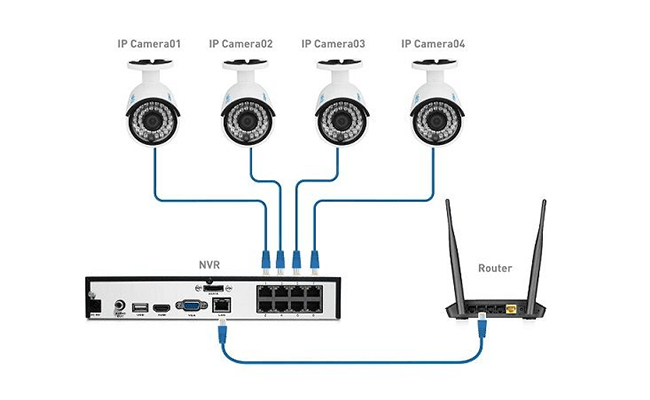Network Infrastructure and Connectivity

Establishing a resilient and well-designed network infrastructure is a foundational aspect of connecting multiple security cameras effectively. In this detailed exploration, we delve into the intricacies of network design, considering both wired and wireless connectivity. The discussion covers essential elements such as network bandwidth allocation, data transmission protocols, and the pivotal roles played by routers and switches in ensuring seamless communication among diverse cameras. A nuanced understanding of these aspects is fundamental for creating a surveillance network capable of handling the demands of modern security systems.
Centralized vs. Decentralized Systems

The choice between centralized and decentralized surveillance systems holds significant implications for the efficiency and scalability of the network. In this comprehensive discussion, we examine the distinctions between these two approaches, considering factors such as data processing, scalability, and system reliability. The role of Network Video Recorders (NVRs) and Digital Video Recorders (DVRs) in managing camera feeds is explored in-depth, providing insights into how these components contribute to the overall structure of a surveillance system.
IP Cameras and Protocols

The evolution of security cameras into Internet Protocol (IP) cameras marks a paradigm shift in surveillance technology. In this extensive exploration, we delve into the significance of IP cameras, categorizing various types and elucidating their features. Additionally, we dissect the importance of standardized communication protocols, such as ONVIF, in ensuring seamless interoperability among cameras from different manufacturers. A deep understanding of IP cameras and protocols is crucial for navigating the diverse landscape of modern surveillance systems.
Integration with Video Management Systems

The backbone of managing multiple security cameras lies in an efficient Video Management System (VMS). In this segment, we dissect the functionalities of VMS, exploring its role in camera configuration, live viewing, recording, and advanced features like motion detection and video analytics. By understanding the capabilities of VMS, users can harness the full potential of their surveillance network, ensuring a unified and user-friendly experience.
Wireless Connectivity and Mesh Networks

As technology advances, wireless connectivity plays an increasingly vital role in connecting security cameras. This section scrutinizes the advantages and challenges associated with wireless solutions, addressing topics such as coverage, reliability, and potential security vulnerabilities. An in-depth examination of mesh networks sheds light on how these configurations enhance the reliability and scalability of wireless surveillance setups, offering a holistic perspective on modern wireless camera networks.
Power Over Ethernet Technology

Simplifying the deployment and connectivity of security cameras, Power Over Ethernet (PoE) technology takes center stage in this detailed discussion. We explore how PoE eliminates the need for separate power cables, streamlining installation processes and reducing infrastructure costs. A comprehensive overview covers the compatibility of PoE with various camera types and its benefits in terms of scalability, flexibility, and overall network efficiency.
Cloud-Based Surveillance Solutions

The advent of cloud-based surveillance solutions has revolutionized how security cameras are connected and managed. This segment explores the advantages of cloud storage, remote access, and scalability. However, the discussion also delves into potential challenges related to bandwidth constraints, data privacy concerns, and security considerations. Understanding the dynamics of cloud-based solutions is essential for those seeking to integrate cameras across diverse locations seamlessly.




Leave a comment
This site is protected by hCaptcha and the hCaptcha Privacy Policy and Terms of Service apply.